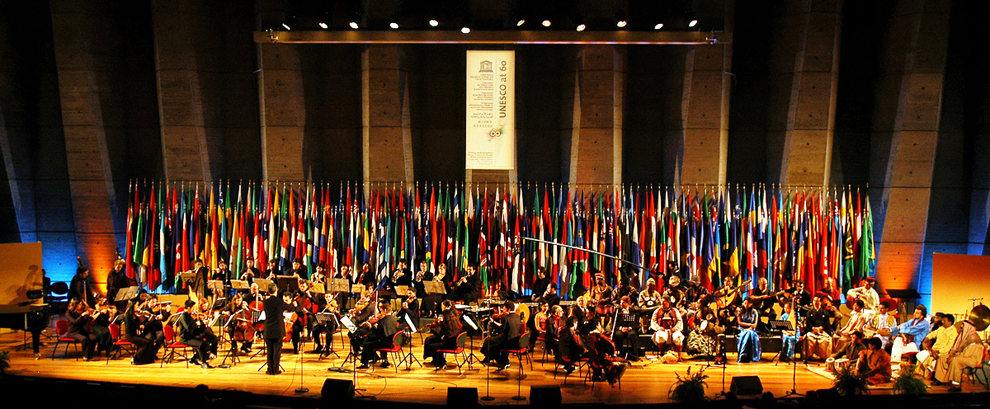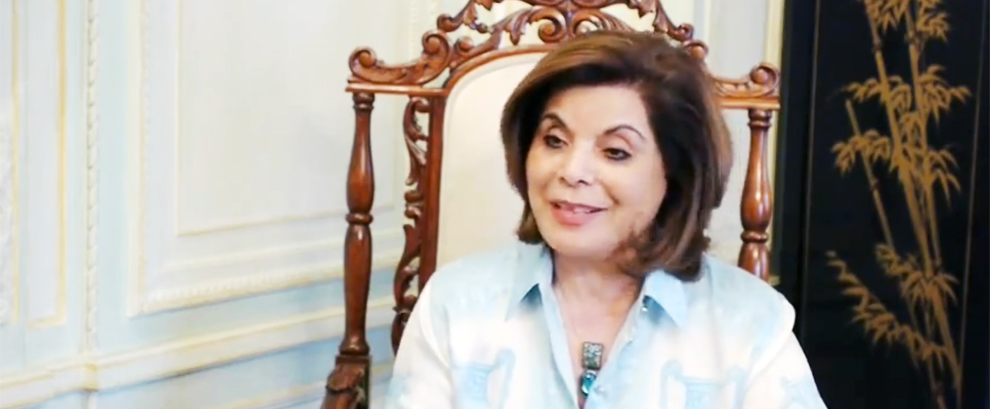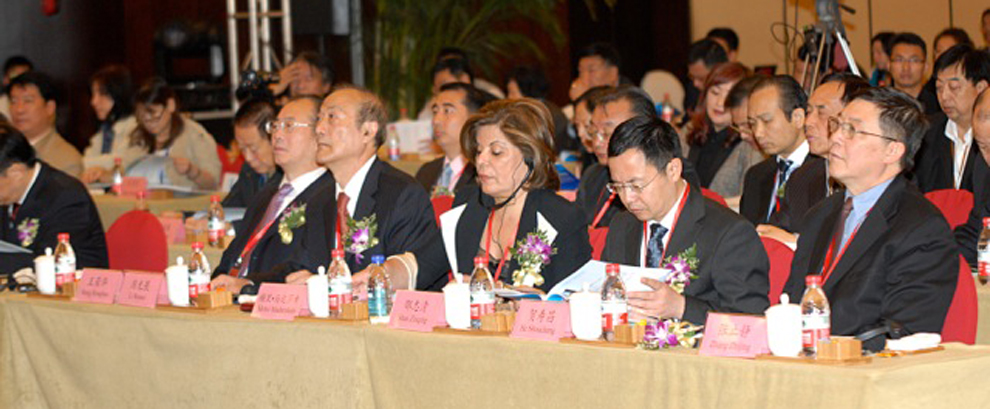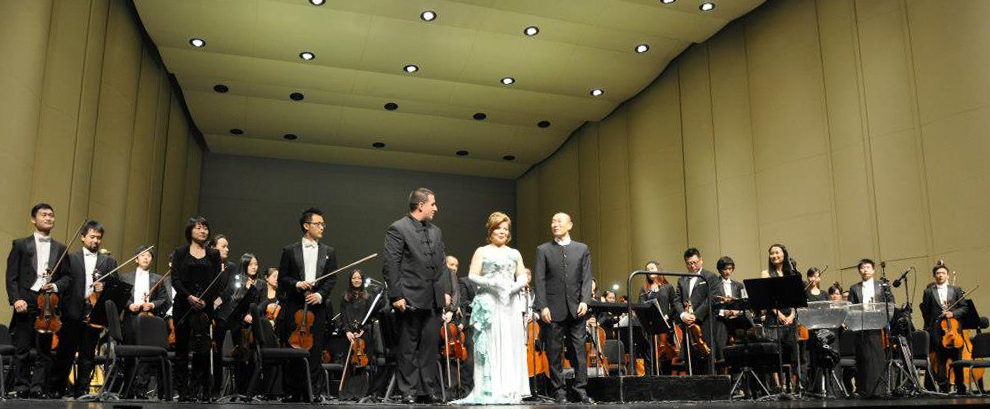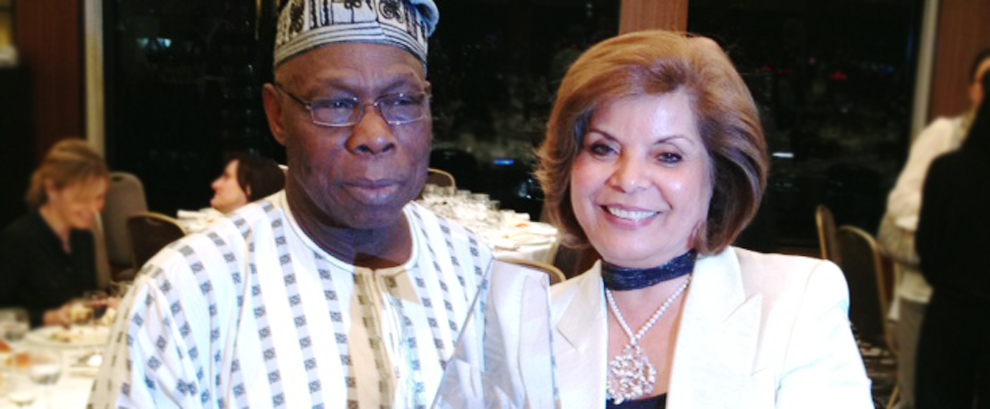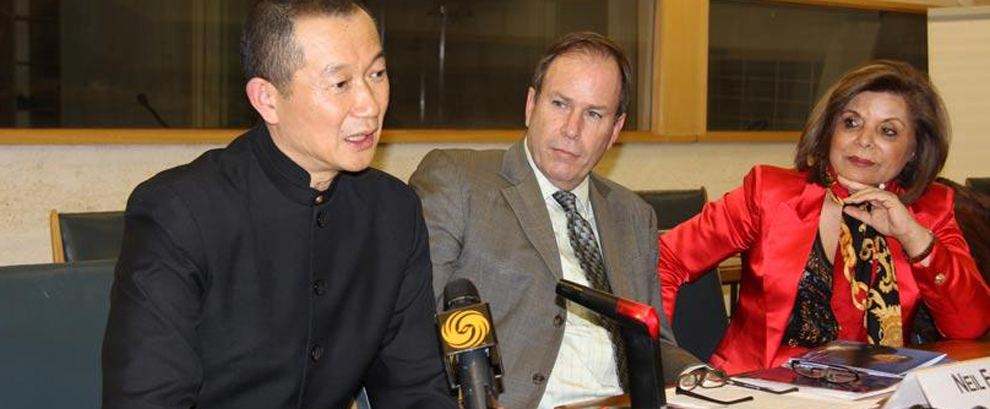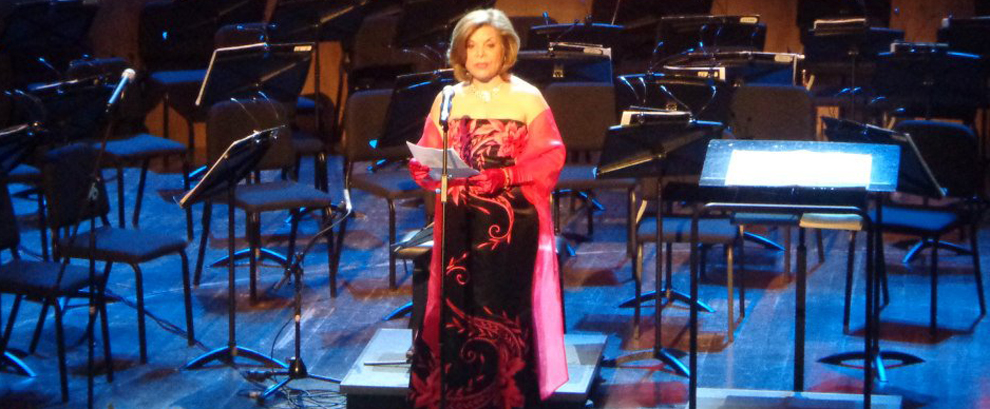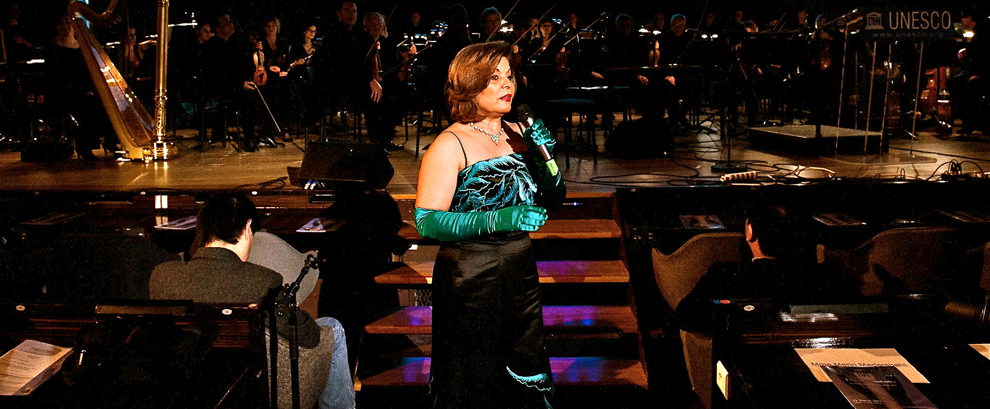MUSIC AS A CATALYST FOR ENVIRONMENTAL AWARENESS
October 1, 2009
Geneva, Switzerland
Presented by Mehri Madarshahi
Excellences,
For months we planned for this important gathering and its pursuant multi-cultural concert that will take place tonight at the most prestigious Victoria Hall not knowing that this one day event will be extended to two full days of activities. Most of you witnessed the glorious afternoon yesterday when a symbolic tree offered by CERN was planted in the presence of Honorable Mayor of Geneva and the Director-General of CERN and the beauty of green spread over the Lake Leman at dawn. These memorable events were culminated in the generous reception by the American Mission to the United Nations in Geneva in honor of this programme.
Happy to see the assembly of such an important gathering here today. Please permit me on behalf of the organizers to extend a very warm welcome to you all. My special thanks goes to President Andre Pastrana, UNESCO (Science Sector and Bureau of Strategic Planning), Centre for European Nuclear Research (CERN), City of Geneva in particular Honorable Mayor Pagani, the International Union for Conservation of Nature (IUCN), Swiss Commission for UNESCO and many others such as WFNUA, ICV and Universitè de Gèneve without whose help these events would not taken shape.
Albert Einstein once said “If I were not a physicist, I would probably be a musician. I often think in music. I live my daydreams in music. I see my life in terms of music …. I get most joy in life out of music.”
And commenting about his theory of relativity, he boldly stated: ”It occurred to me by intuition, and music was the driving force behind that intuition. My discovery was the result of musical perception.”
That’s a tall order and indeed a compass for the events which will unfold today. This international forum and tonight’s mega concert intend to underscore the role of music as a new instrument of awareness and advocacy. It is, I believe, one of the most natural and oldest means of communication and a very effective international language of its own. We will focus also on the traditional role of the artist as a social and cultural agent and how she or he can become a link between people and the environment and nature.
Over the past few years culture-environment relations have revealed numerous aspects of human behavior, cognition, preference and meaning. It has become clear that understandings of, and visions for, sustainability will be different for each one among us and that, there is no “single route” to sustainable development.
Agenda 21 adopted by the Rio Summit in 1992 identified education as an essential tool for achieving sustainable development. Education for Sustainable Development (ESD) seeks to empower people to assume responsibility for creating a sustainable future. It is acknowledged that if ESD is to be an effective tool for engaging people in negotiating a sustainable future, making decisions and acting on them, it must first address the way each and every citizen thinks about sustainable development. Therefore, an essential underlying theme and central to ESD is the concept of culture.
Achieving sustainable development requires balancing environmental, societal, cultural and economic considerations in the pursuit of development and an improved quality of life. To attain these goals there is an argument in favor of an interdisciplinary framework for cooperation where artists are integrated in the field of environmental studies. Conversely, an environmental approach must be introduced within art studies and a serious interdisciplinary cooperation on environmental issues should involve artists, scientists, humanists, planners, activists, and governmental bodies. Environmental and land art are signs in this direction.
Art has so much to contribute. Even the most proficient scientist may not succeed in communicating the severity of an environmental problem to the public, because she or he may not be adept at instilling or provoking an emotional sense of belonging or the feeling of “Genius Loci.” This role belongs to the cultural agents, as it were – the artists, writers, actors, directors and journalists. They will be able to unleash the innate power of art as an agent for raising awareness and building commitment for environmental action. Environmental education and grass-roots community activism will play a critical role and we will hear and learn today about many approaches and experiences.
It is unfortunate that the bad news of today are no longer received as bad news : we are living and continue living in an unsustainable way and there is abundant scientific evidence to back this up. But do we care enough to change our behavior and our life-styles? Tonight’s concert will celebrate nature and advocates for a sustainable environment; where the blue water remains blue and the green forest will enhance the purity of the fresh air we breathe. The objective of the program is to awaken those who take for granted, what is provided in our natural environment in its abundance.
The selected compositions for tonight’s concert reflect one or other aspects of our planet earth, the rivers, forests oceans and storms. Let us hope that the beauty of this program will serve as a reminder that everyone of us should feel obliged to care for the preservation of our planet of earth.
Our generation has devastated this blue planet, and depleted its abundant resources. We are the generation of greed and waste. Let’s change.
Let me now in conclusion express once again my deepest appreciation to the manifold partners who have collaborated with the Melody for Dialogue among Civilizations Association to make these events possible. We hope the unique and innovative idea of linking environmental awareness with music could be considered as an important step forward in preservation of what is left to us and what we are obligated to pass it on to our future generations in its entirety.
Thank you!


